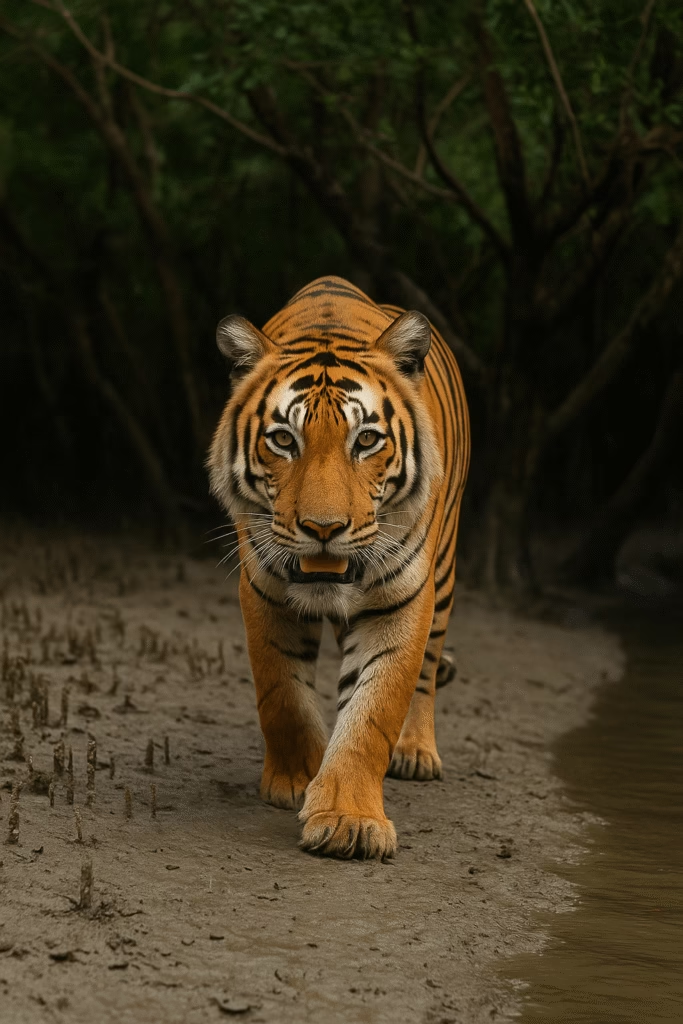
Top 7 Fascinating Facts About Sundarban National Park That Will Amaze You
Table of Contents:
- What is Sundarban National Park?
- 1. Home to the Royal Bengal Tiger
- 2. World’s Largest Mangrove Forest
- 3. UNESCO World Heritage Site
- 4. A Rich Biodiversity Hotspot
- 5. Intriguing Local Culture and Traditions
- 6. Best Time to Visit Sundarban National Park
- 7. Responsible Tourism and Safety Tips
- Plan Your Trip with Us
What is Sundarban National Park?
Located in the southern region of West Bengal, Sundarban National Park is a truly fascinating place for wildlife enthusiasts and nature lovers. Famous for its lush mangrove cover, abundant biodiversity, and the critically endangered Royal Bengal Tiger, this national park is part of the Sundarbans delta, created by the union of the Ganges, Brahmaputra, and Meghna rivers.
1. Home of the Royal Bengal Tiger
The crown jewel of any trip to Sundarban National Park is the opportunity to see the awe-inspiring Royal Bengal Tiger in its natural habit. Unlike other tiger parks, tigers in Sundarban National Park are famous for swimming through broad rivers and adjusting to tidal landscapes. They are stealthy and powerful, and hence, one of the most dreaded and revered predators of the forest.
External Source: WWF India on Sundarbans
2. World’s Largest Mangrove Forest
Spanning more than 10,000 sq km, Sundarbans is the world’s largest mangrove forest. Sundarbans’ Indian side (approximately 4,000 sq km) contains Sundarban National Park, which has a unique terrain of muddy tidal creeks, dense mangrove roots, and rich aquatic life.
3. UNESCO World Heritage Site
In 1987, the Sundarban National Park was designated a UNESCO World Heritage Site due to its ecological importance and remarkable natural beauty. The park habituates various endangered species such as the Estuarine Crocodile, River Terrapin, and Gangetic Dolphin.
External Resource: UNESCO World Heritage – Sundarbans
4. A Biodiversity Rich Hotspot
The Sundarbans has more than:
300 bird species
120 species of fish
42 mammals
35 reptiles
8 species of amphibians
From saltwater crocodiles to monitor lizards, and even endangered species such as fishing cats and otters, Sundarban National Park is a haven for biodiversity.
5. Fascinating Local Culture and Traditions
The area is populated by native tribes who highly value the forest. The people revere Bonbibi, the forest protector deity, who is said to defend them from tiger attacks. Their existence is closely linked with the tides, the rivers, and the jungle’s rhythm.
6. Best Time to Visit Sundarban National Park
The best time to visit Sundarban National Park is October to March, when the weather is nice, and wildlife spotting is more common. Steer clear of the rainy season (June to September) since excessive rain can interrupt boat safaris and travel.
Pro Tip: Visit in December or January to witness the Bonbibi Pala Festival – an epic reenactment of local legends in the villages.
7. Responsible Tourism and Safety Tips
Special permits are needed to visit Sundarban National Park, and one travels by boat along tidal channels. Book your journey with trained, licensed tour operators at all times. Treat wildlife gently, do not litter with plastics, and use authorized routes.
Use light-colored clothing and binoculars.
Be quiet and subtle.
Have an insect repellent on hand.
Plan Your Sundarban Trip with Us
It can be a hassle to plan a safe and memorable visit to Sundarban National Park, but our experts at SundarbanForest.com are here to assist you. Whether it’s 2N/3D group tours, private family vacations, or adventure safaris that you’re looking for, we take care of everything—permits to meals.
Related Read: 2 Nights 3 Days Sundarban Tour Package from Kolkata
Final Words
With its magical wilderness, stunning wildlife, and rich culture, Sundarban National Park is not a travel destination, it is a journey to the heart of nature. Come and experience the wild beauty and return with memories to be cherished forever.